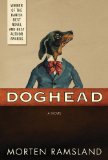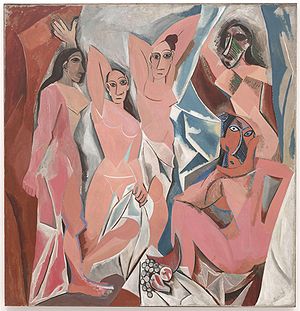Summary | Excerpt | Reviews | Beyond the Book | Read-Alikes | Genres & Themes | Author Bio

Critics' Opinion:
Readers' Opinion:
First Published:
Feb 2009, 384 pages
Paperback:
Jul 2010, 384 pages
 Book Reviewed by:
Book Reviewed by:
Marnie Colton
Buy This Book
This article relates to Doghead
Asger inherits his love of art from Grandpa Askild, who paints in the Cubist style
pioneered by artists like Pablo Picasso, Georges
Braque, and Juan Gris, influenced by Paul Cezanne's later work. Although some art historians now credit the lesser-known Braque with creating the first Cubist paintings, Picasso's Les Demoiselles d'Avignon, painted in 1907, was long considered Cubism's precursor, and the beginning of modern art. Though it wasn't exhibited until 1914, it wrestles with ideas that would become central to the Cubist movement -- "the most important and influential single innovation in the early history of modern art," according to historian Simon Wilson.
 Les Demoiselles d'Avignon Les Demoiselles d'Avignonby Pablo Picasso (2007) |
Filed under Music and the Arts
![]() This "beyond the book article" relates to Doghead. It originally ran in April 2009 and has been updated for the
July 2010 paperback edition.
Go to magazine.
This "beyond the book article" relates to Doghead. It originally ran in April 2009 and has been updated for the
July 2010 paperback edition.
Go to magazine.





The Flower Sisters
by Michelle Collins Anderson
From the new Fannie Flagg of the Ozarks, a richly-woven story of family, forgiveness, and reinvention.

The House on Biscayne Bay
by Chanel Cleeton
As death stalks a gothic mansion in Miami, the lives of two women intertwine as the past and present collide.

The Funeral Cryer by Wenyan Lu
Debut novelist Wenyan Lu brings us this witty yet profound story about one woman's midlife reawakening in contemporary rural China.
Your guide toexceptional books
BookBrowse seeks out and recommends the best in contemporary fiction and nonfiction—books that not only engage and entertain but also deepen our understanding of ourselves and the world around us.